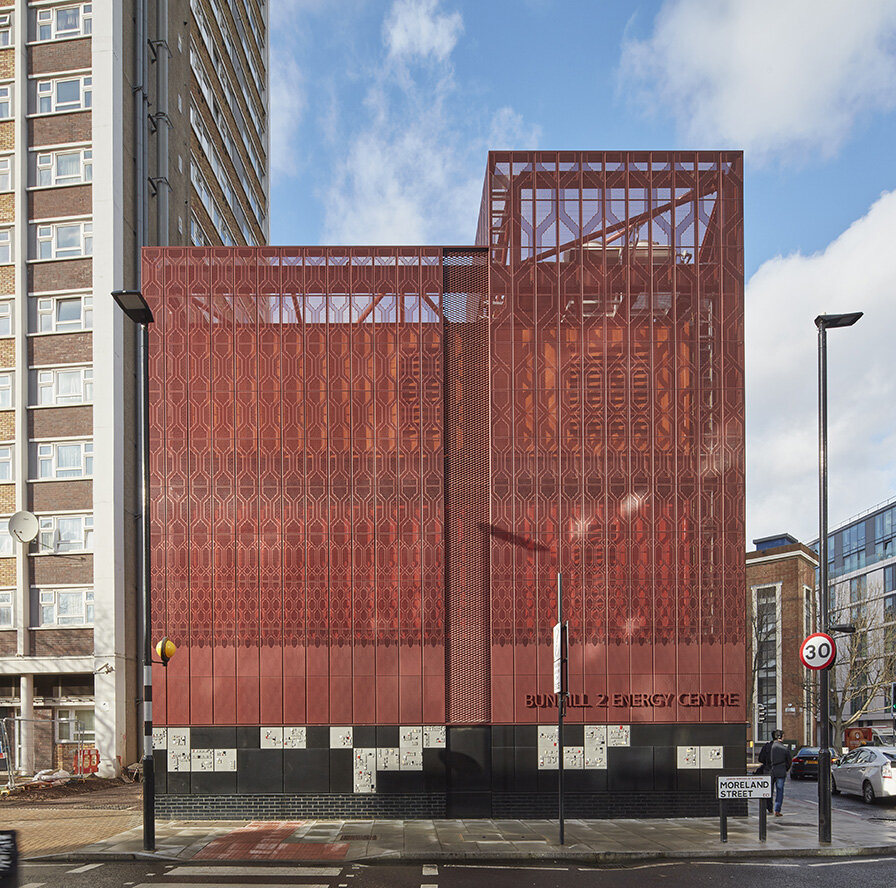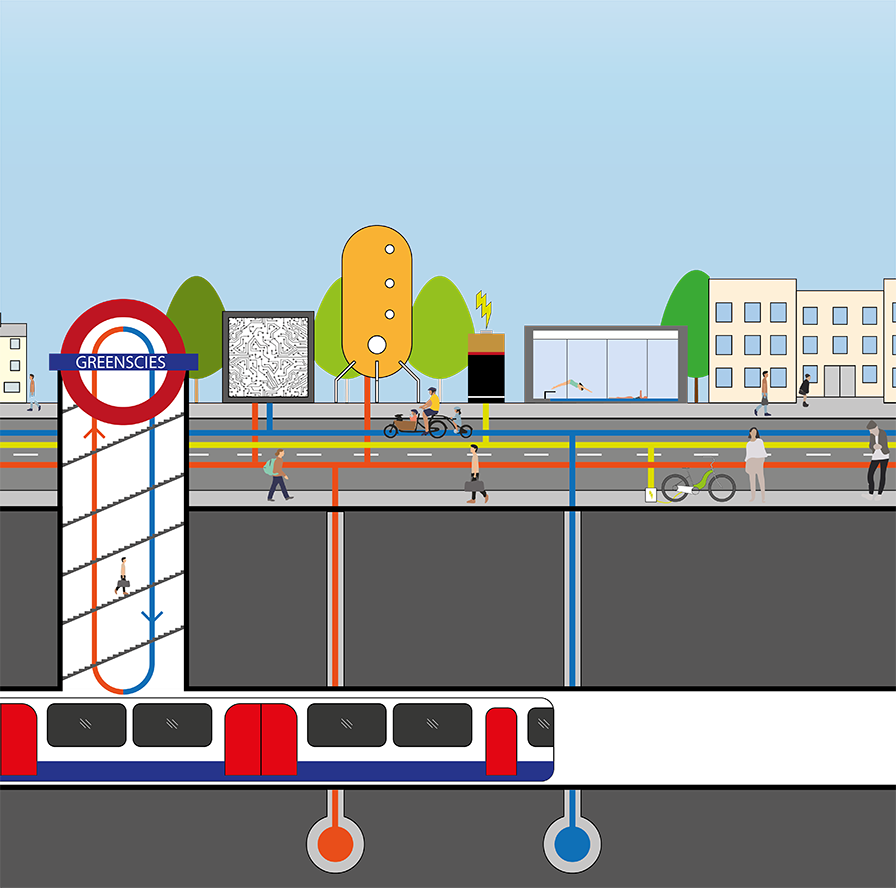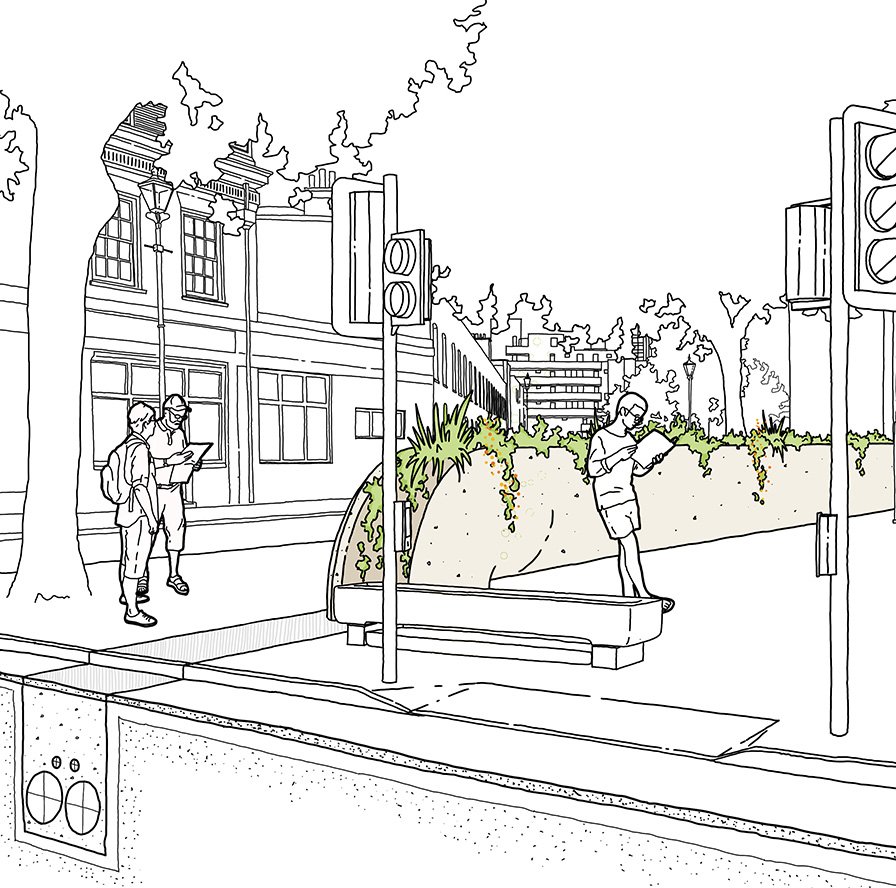Smart Local Energy Systems: How Bunhill 2 points the way to a better energy future
As the architect on the pioneering Bunhill 2 Energy Centre, Cullinan Studio gained a host of insights into the practicalities of delivering innovative, green community heating. But we believe that the most exciting thing about the project is that it paves the way for ever more ambitious projects: Smart Local Energy Systems that can revolutionise the way we think about energy...
The Bunhill 2 Energy Centre in Islington is a world-first for civic heating engineering. A huge fan built into the lift shaft of a long-defunct London Underground station extracts waste warm air from the Northern Line tunnels. This air heats water that is pumped through a network of subterranean pipes, delivering discounted heating and hot water to a neighbouring primary school, two local swimming pools and over 800 local homes.
The technology, the engineering solutions and the architectural approaches involved are all new, and Bunhill 2’s successful use of the Underground tunnel network opens up exciting opportunities for the capital. The Greater London Authority estimates there is enough wasted heat in London to meet 38% of the city’s heating demand; and, by expanding district heating networks like Bunhill, this could rise to 63% of demand by 2050.
But other innovations that emerged from the project offer a glimpse of an even bigger picture. The fan can be reversed to cool the Tube tunnels in the summer, while the state-of-the-art tech also generates cheap, green electricity that powers the communal lighting and lifts of an adjacent tower block. These benefits go beyond just district heating and open up possibilities for power and mobility; for low-cost, low-carbon ways for a local area to power its own buildings, applications and electric vehicles.
These are exactly the kinds of circular systems envisioned by GreenSCIES, a consortium funded by Innovate UK that aims to explore and develop designs for Smart Local Energy Systems that integrate new low carbon energy technologies across heat, power and mobility.
Here, from an architect’s perspective, are five key insights from Bunhill 2: lessons that show how a district heating system can be a practical first step on the journey towards making even more ambitious local energy systems achievable.
1. Good collaboration can deliver innovation
Wherever they are in the world, low carbon energy projects are going to throw up all sorts of new technical and political challenges that will require innovative solutions, open minds and good relationships. Collaboration right from the start of a project is essential in order to maximise efficiency, save time and money and overcome the inevitable problems that arise.
Designing and building Bunhill 2 meant bringing together parties including civil engineers and specialist District Energy engineers, and needing to meet the various requirements of Islington council, TfL, Planners and local residents. Cullinan Studio’s role was to help facilitate between all these parties, coordinating infrastructure, architecture and the community engagement. We provided the architectural design which McGurk Architects were then appointed to take through to completion.
Bunhill 2 shows that even highly complex projects can be successfully delivered by architects with expertise in making collaboration work.
2. Getting buy-in from local residents is critical
City energy centres involve making use of land in densely-populated, intricate urban areas, so it is essential to fully understand and respond to the views of the people who will be directly affected.
For the Bunhill 2 project Cullinan Studio provided community engagement, running workshops with local residents and incorporating their feedback into the design process. Participation of resident communities in the design of an energy centre can provide a sense of local ownership and pride – and will also be important to support a successful planning process.
On our Innovate UK funded GreenSCIES energy project, we have established ‘critical friends’ within the Islington community and we are engaged in a co-design process – recognized as more effective than mere consultation – to help de-risk the project during planning approval. Being able to demonstrate to the local authority that meaningful community engagement is underway will also build confidence.
3. Planning concerns can be addressed with the right groundwork
Energy centres and their district heating infrastructure are a new kind of network to cities, which means that the planning process is likely to be very challenging.
This was certainly the case with Bunhill - which was a world-first, never mind a London-first. There were concerns about the possibilities of noise, light and air pollution, as well as the complexities of the interface with the London Underground – all of which Cullinan Studio had to address directly with planners. But the process did prove that architects can successfully take the lead in securing the required approvals, if they do the right groundwork.
4. Energy centres can be proud, distinctive civic structures
Bunhill 2 doesn’t look like a power station dropped into a city street. In what was a forlorn and neglected site it provides a striking addition to the neighbourhood – a structure of beauty and interest that echoes existing building lines yet redefines the street corner. Black glazed brick charcoal vitreous enamel steel and deep- red metal cladding reference the materials and colours of the Underground, while tessellating across the base are cast aluminium relief panels designed by artist Toby Paterson to take inspiration from the local estates the energy centre serves.
Smart local energy centres can be more than merely functional: they provide an opportunity for architects to revitalise neglected sites and design something that enhances the city and makes people proud.
5. Opportunities are everywhere
Bunhill 2 is truly groundbreaking because opportunities to apply the basic blueprint exist almost everywhere. Any city in the world with an underground train network can replicate the circular heat pump concept, but myriad other possibilities exist to make use of wasted heat and energy: in sewers, tunnels, data centres and more. GreenSCIES is currently exploring projects including the use of waste heat from heavy and light industry in Birmingham; and from disused mine shafts in Sheffield.
Once eyes are opened to the low-cost, sustainable energy that can be harnessed from the ordinary workings of any city, the sheer scale of the worldwide opportunity becomes clear.
These are the kinds of systems that can improve local air quality, combat fuel poverty by making heating more affordable for communities, make energy more efficient by producing it locally to where it is used, and make net zero carbon goals achievable. Bunhill 2 is a first step on the road to a radical new approach to energy, where keeping things local has truly global benefits.
As the architects behind Bunhill 2, Cullinan Studio are uniquely positioned to provide insights and expertise on the design practicalities of future Smart Local Energy Systems. To discuss, contact Kristina Roszynski.





